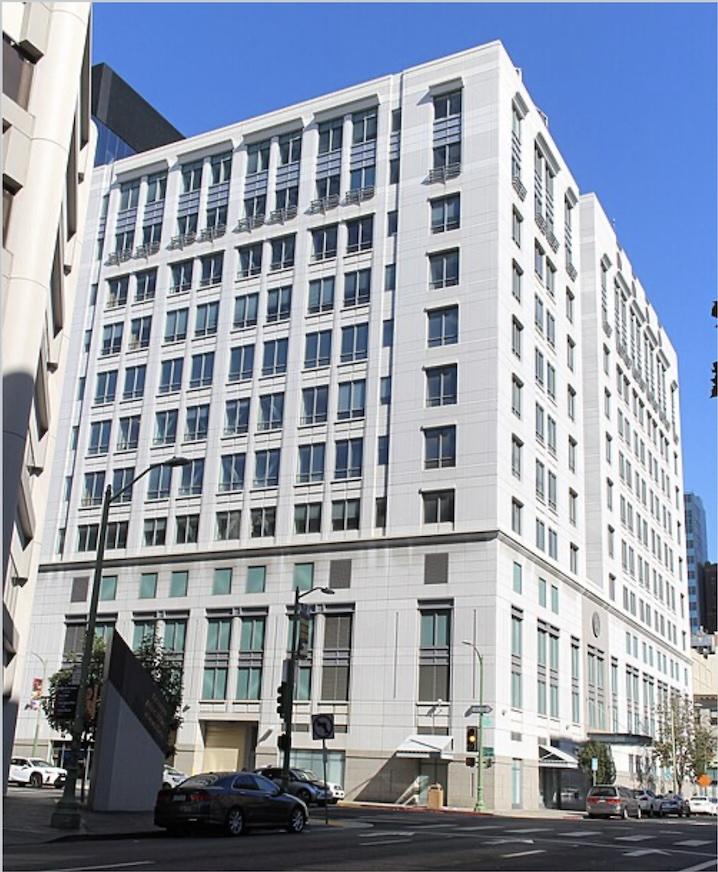Brings ‘I Love Tacloban’ band as token of thanks
It’s been five years since Typhoon Haiyan (also locally known as Yolanda) hit the city of Tacloban, but the city for the most part is back on the rise with malls, hotels, cafés, and other establishments getting normal traffic.
Its famous San Juanico Bridge that stretches from Leyte to Samar, continues to be regularly traveled. Some of the cargo vessels that have washed ashore have turned into memorial markers. Businesses have even named themselves after Haiyan.
Alfred Sison Romualdez, who served as mayor during the city’s deadliest and toughest catastrophe, can still recall many of the challenges he faced.
Though born in San Juan, Manila, Romualdez is a full fledged Taclobanon as anyone who knows his family name can attest. The Romualdez name has been a familiar one in the region for a number of generations. His father Alfredo is the brother of the famed Imelda Romualdez Marcos, wife of former Philippine President Ferdinand Marcos. The Tacloban City Airport, also known as the Daniel Z. Romualdez Airport — is named after Imelda’s first cousin.
In 1998, Romualdez became congressman while his father was serving as mayor. Following his father’s term, he himself was elected mayor in 2007 which brought him to the city full time.
“At that time, there were still a lot of things to do in Tacloban City,” Romualdez told the Asian Journal in a recent interview.
A capital of the province of Leyte, Tacloban is the center for trade, tourism, culture, education, and government in the Eastern Visayas region. Among his most satisfying achievements as mayor was campaigning Tacloban from a component city, into a highly urbanized city a year into his term. The city became to first to do in the Eastern Visayas region, and the 34th in the Philippines.
But as the city began to reach its peak, it was quickly swept under the waves of Typhoon Haiyan, or Super Typhoon Yolanda as it is more commonly referred as in the Philippines.
“It was very hard as a leader,” said Romualdez, who was serving his second mayoral term during the typhoon. “I couldn’t show them that I was devastated. It’s like being captain of the ship. We go down with the ship.”
Haiyan had become the strongest tropical cyclone to ever be recorded when it hit. Reaching over 300 km/h at its highest, it ransacked everything in its path. Flattened coconut tree farms and washed up cargo boats were common images in international media. Pulling out his cellphone, Romualdez played back videos of the ordeal including a clip of the waters reaching the second floor balcony of a building.
Haiyan’s aftermath further revealed it to be the deadliest with death toll reports ranging anywhere from 6,000 to 15,000 depending on the source. Many agree though that its exact number may never be known. Romualdez said the last body he personally buried was just last New Year’s Eve.
But the challenges naturally continued to pile up after the storm as millions of newly displaced people were left disoriented and struggled to make sense of what would happen next. Due to Haiyan’s intensity, even the local government was paralyzed, he said.
CNN anchor Anderson Cooper, who did extensive coverage on the typhoon, described the situation as being “among the most desperate” he’d seen in the last couple of years he’s covered natural disasters prior to Haiyan.
Being the capital, it’s customary that everyone flocks to Tacloban when there’s a storm, said Romualdez. Tropical storms are common in the region that consists of six provinces. In fact, Haiyan was the country’s 25th typhoon to hit that year, and it was only March.
“I’m a hands on guy,” said the former mayor, recalling the moments after the typhoon. He said he and his team had been driving a payloader around trying to clear a way back to the city. This was made difficult as evacuations centers and the city itself was jam packed with people.
“How do we move all this debris with all these people in the streets?,” Romualdez recalled thinking. In effort to free up space, he said he even began asking for humanitarian flights by Philippine Airlines and Cebu Pacific to help fly people out to relatives outside the city.
“I was on the street the very first day clearing debris, clearing routes to the hospitals,” he added. In the clearing process, bodies continued to reveal themselves, adding to the death toll.
Derrick Anido, the city disaster management officer at the time, likened the streets to scenes one would only wish to see in movies.
“In less than an hour, I saw two dump trucks just full of bodies,” said Anido. “It was a scene you would’ve only seen in the movies. Worse than that. It was unbelievable.”
Romualdez said the challenges were compounded as he found it difficult to find common ground with the national government.
For one, Romualdez believes that more effort should have immediately focused more on building a community plan rather than just housing.
“Building a community is quite different from just building housing,” he said.
Another instance he shared, came as the Department for Social Welfare began giving 50 kilos (110 pounds) of rice a month to families regardless of how many children were in the household.
Being in excess of rice, Romualdez said that many began to sell portions of their rice to buy other needed things like clothes and medicine. And because it was prohibited to sell relief goods, many were also arrested.
“That’s not the way to do it,” said Romualdez while commending the USAID process of distributing goods depending on the number of family members in a household.
He said USAID were among the first to give assistance — giving foods that were immediately edible.
“Doesn’t taste that great, but its nutritious in that it’s going to help you survive if even for a couple of days,” he said.
“You’re not giving rice because you want them to feel happy. You want them to eat it, right?” he said.
Recovery and Resilience
In the weeks, months, and even years following the disaster, Taclobanons and the Waray people in general were praised for their resiliency.
“What I see with Tacloban now is a city that is resilient because of its people,” said Romualdez.
“Here’s what I always tell people,” he added. “Why is Tacloban, or any city strong? It’s because of its people. So we have to invest in our people.”
As the region’s population began to rebuild themselves, Romualdez said he wanted to make sure that sustainability was in the city’s near future.
“The best way to get back — as I’ve told people — is to start opening shop,” he said. “Open shop, open your stores.”
Among the first to open up again was Coca-Cola which spent around $7 million, he added.
While most of the help financially was going to municipalities around Tacloban rather than in Tacloban itself, he said that what was more important was that the spending was happening in Tacloban because they already facilities up and running.
“We had groceries open, we had the mall opening,” Romualdez added. “This is what we pushed. That’s why we’re able to sustain it.”
Currently, two malls developed by one of the nation’s leading property developers Robinsons Land Corporation, stand in the city. According to the company, the second mall was a testament to the trust the company had in the city’s resilience.
“I had hopes from the very start,” said Romualdez. “I said I’m not leaving. We’re going to build this city back and we did. And I’ll do it again.
‘I Love Tacloban’
Amidst a visit to Fil-Am and Taclobanon communities in California this May and June, traveling with Romualdez was the I Love Tacloban band, an ensemble formed after Haiyan. The band consists of six members — most of whom are typhoon survivors.
The band, Romualdez said, was just part of his many projects. He also has the I Love Tacloban Foundation.
The general message being spread by the band is that of thankfulness to those who have helped the city. At the same time, they’re also representing the city of Tacloban.
Asked why he chose a band to be a part of his efforts, Romualdez responded, “First of all, it’s accessible.”
“It’s something that demonstrates human relation to people. As you can see now, it even shapes society,” he added, mentioning the music of the 60s to now.
“It’s a good way to communicate and it inspires people,” he said.
One of the lead vocalists, Gamaliel Gobenciong, cited the common idea of music as therapy. Music has always been a big part of his family. A survivor himself, he recalled his family being taken by surprise given that Tacloban was always hit by typhoons and storm surges.
Edwin Espiño, guitarist and music director of the group, pointed to the Filipino culture of music.
“All over the Philippines, music is a lifestyle. It’s part of our life as Filipinos,” said Espiño. “Especially in Tacloban, people gather — relatives, friends — and they drink and they sing. That’s what makes us happy. And that’s what makes the family closer.”
While the band sings many popular songs by artists like Bruno Mars and Adele, Romualdez said they also sing Filipino songs including in Waray which many — especially those who have migrated to the states — may not have heard in a while.
Romualdez also expressed that he would also like to encourage Taclobanons to get involved with the rebuilding and growth of Tacloban. Among the organizations being visited by him and the band are the Waraynon Initiative Network, and the Taclobanon Association of Southern California.
“I’d like people to come back. Share their ideas, their views, their visions,” said Romualdez. “That’s how you make a city strong. You have to work on the people.”
While in California, the group had several performances lined up including for the Love of Country Global Ambassadors Program on Sunday, June 3 at the Levo Entertainment Center in Burbank, CA, and an open-to-the-public performance at the Westin Long Beach hotel on Friday, June 8.







